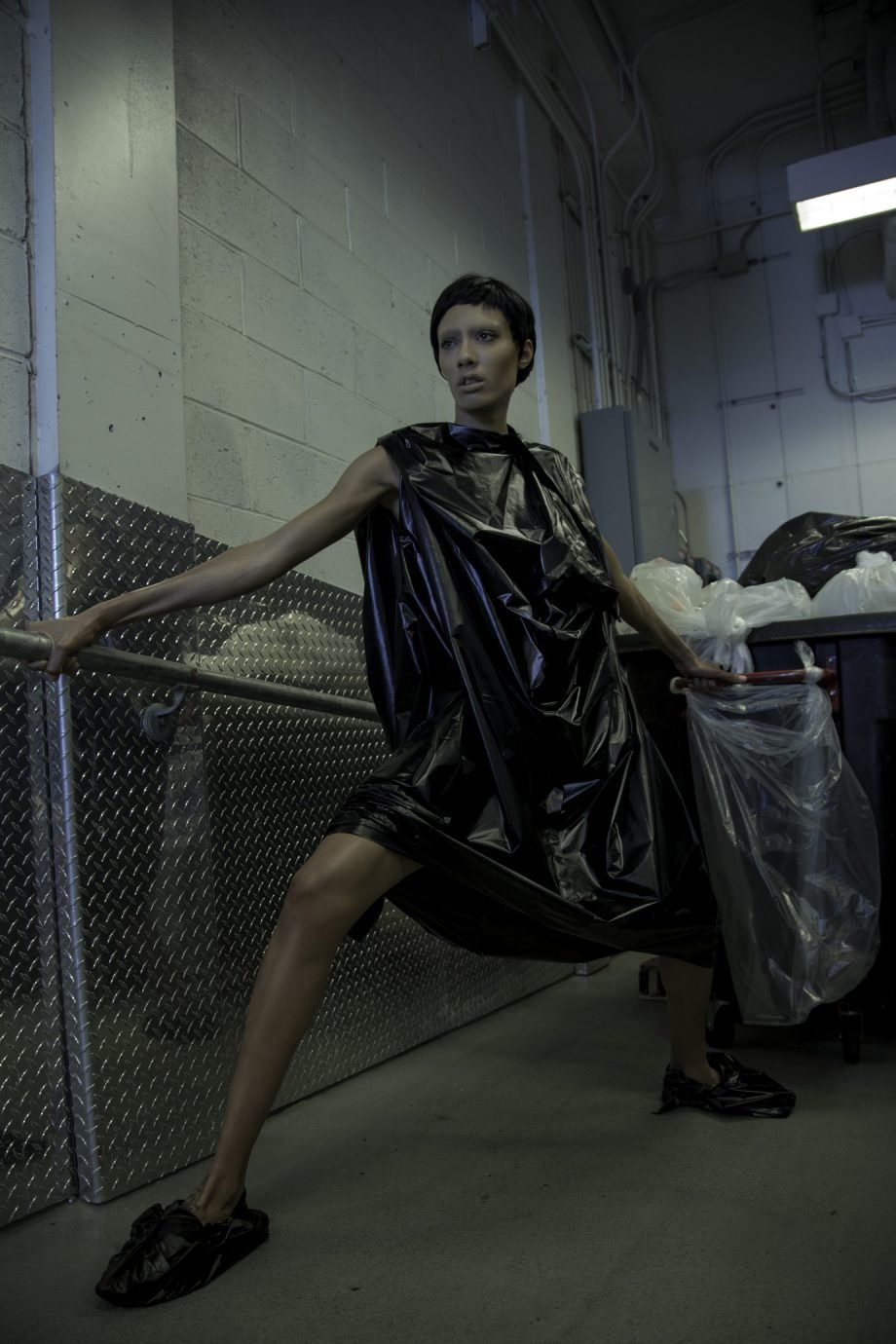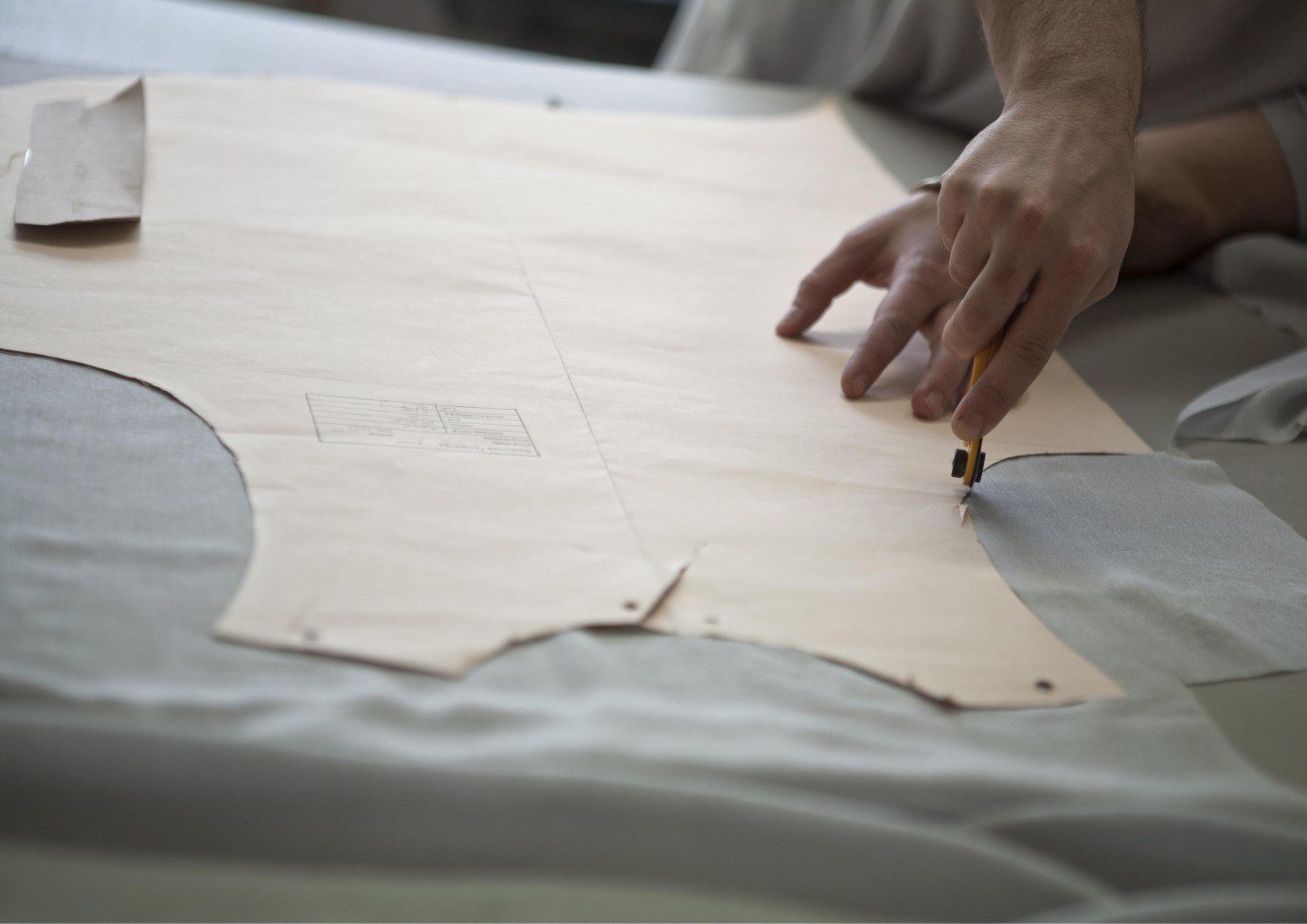The Dutch womenswear designer finds storytelling an integral aspect of creating a collection. Weaving stories around characters has been something he has done since his childhood. “It’s not a very fancy story but my mother always tells me about times when I was a kid, always making structures and trying things with fabric,” says Benji. Based in the Netherlands, Benji’s core design values are built around tailoring and bringing characters to life through his creations.
Sci-fi meets 50s French couture in Benji Nijenhuis’ collection of dystopian fantasies
Benji Nijenhuis on building narratives with a twisted sense of humour
“Fashion for me is a way to communicate things, it’s a tool for me to express myself.”
“Fashion for me is a way to communicate things, it’s a tool for me to express myself,” he says. His start to a career in fashion began at the technical cutting and sewing school based in Groningen, where he learnt the intricacies of tailoring, which has become his speciality. “Tailoring is the core from where I start making my collection, it’s something I find really important,” says the designer. A recent graduate of fashion design from Artez University of the Arts in Arnhem, he discovered his penchant for storytelling while completing his BA this year.
The significant factor that shapes his design identity is his romanticised view of fashion. Benji’s imagination is like pieces of fiction that he uses to breathe life into his collection with fabrics, themes and a little bit of his own personality. “It’s like making a film around a character and you have to think of the smallest details like what kind of house do they live in,” he explains. He switches to talk about Dior under Galliano’s reign as an aspirational time in fashion, and with this reference in mind he pushes the boundaries to the extreme in his creations. The designer likes to use theatricality and shock value to realise his vision. “It could be perfection, so perfect that you could almost get scared of it,” says Benji. Perfection, if put in context to his Galliano-esque references, explains the attention to detail in his collection that Benji is obsessed with. His personality clearly resonates in his designs, perfectly encapsulating the essence of who he is as a creative.
“I wanted to put the human into the perspective of the most dangerous animal that ever existed.”
For his graduate collection, Broken World and the Beast, the starting point was the wearer. He questions the core definition of a human today. “I wanted to put the human into the perspective of the most dangerous animal that ever existed,” says Benji. Inspired by sci-fi films and predators that roam the earth, he created an anthropomorphic character for his narrative, using it to manifest an otherworldly fantasy. The silhouettes were remastered from the 50s period. He took classics like Dior’s New Look, the Chanel suit, giving them an extreme and almost aggressive makeover. While tailoring is his niche, he also leans towards a conceptual narrative by using recognisable silhouettes and parodying it. As a distorted melody of Mr Sandman played in the background of his collection video, accents like the pink arm-length gloves, helmets and bags with spikes that were paired with cinched in waistlines of dresses completed this fantasy.
Leather, Velcro and metal spikes were used in the collection, a choice of materials he identifies with military wear, as if to say the clothes and the wearer – who may seem beautiful, has a defensive and tough exterior. Featured in the line-up was a swimsuit made of satin silk, with a bright orange print of an erupting volcano. From a distance it gives the idea of a regular swimsuit, but from up close, it’s anything but. The loud colour palette with bright hues of pinks, purples and blues renders it far from the conventional but adds the theatricality that is key to Benji’s vision.
“Designing under quarantine was terrible.”
Much to his relief, the quarantine rules in his country lasted ten weeks after which he was allowed to return to the studios. “Designing under quarantine was terrible,” admits the designer. Although the initial plan for him was to use strong visuals to enhance the narrative of his collection, it was not logistically possible given the pandemic. Instead, Benji decided to express the narrative through styling and makeup. “It is nice to have a background story behind something, but for me the visual is most impactful,” says Benji. Playing with beauty ideals, he wanted animated faces to model the collection, the designer achieved that through exaggerating the features by bold makeup resembling the aesthetic of rock band KISS. “The make-up is intense because I tried to make a glamorous person who wasn’t really done with her entire make-up process.” He continues, “It’s this idea of a woman who is not really done with her look.”
“Designing is a lot of hard work so you really need to like doing it, I have friends that quit in the first year because they didn’t like the teaching method, so it’s not for everybody.”
He describes his experience at Artez as a time of fun and building a bond with likeminded people. “We have been together for four years and everybody has the same work and pressures, so it was a really nice experience to go through it together,” he reminisces. The course also helped him explore different avenues, experimenting with materials and exploring his own aesthetic. As a student, the biggest learning for him has been following his instincts and being passionate about his work. “Designing is a lot of hard work so you really need to like doing it, I have friends that quit in the first year because they didn’t like the teaching method, so it’s not for everybody,” says Benji.
Currently, the Dutch designer works two days a week at G-Star RAW, where he specialises in shape development. The rest of the week he works on setting up his own brand with his partner. “Me and my boyfriend have started an old school fashion house, we call it The Nightmare Disorder,” he explains. Having recently launched the fashion brand with a presentation at Fashion Clash, an experimental fashion platform in the Netherlands, things are already in motion for them.
Starting his own label has given him a perspective into industry practices. “People really need to think about their fabrics and their development,” he explains. “They don’t need to send clothes all over the world to be developed. If you want to dive into the future, that’s something you have to take care of,” adds Benji. His brand also helped him look at fashion from a broader perspective as he hopes to segue into designing for films, coming back full circle to his love for building characters and creating a narrative. Looking towards the future, the designer’s vision for his start-up, shifting away from the traditional path of seasonal collections, is an interesting way to navigate the industry in uncertain times like these. “It’s not necessary for me to make a whole collection twice a year, in a film you really get to think about the character and create according to that,” says a hopeful Benji.







































